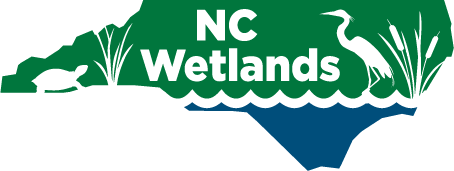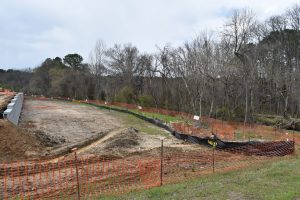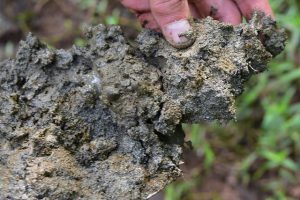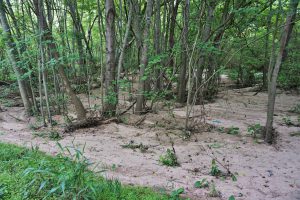Permitting Process
Summary of the North Carolina Wetland Permitting Process
This information focuses primarily on wetlands. Impacts to streams, ponds, lakes, and riparian buffers are also regulated, and similar permitting requirements may apply.
What type of permit do I need, and how do I apply?
North Carolina has many statutes and rules that apply to wetlands within the state. Activities that impact streams, wetlands, and open waters in North Carolina (e.g., placing material of any type in a wetland or stream, any disturbance to the soil or flow of water in a wetland, damming of a stream channel to create a pond or lake, any disturbance to the bottom or sides of a stream) will require an application for a Section 404 permit (Clean Water Act) with the US Army Corps of Engineers (USACE). If a development project is proposed in an Area of Environmental Concern in one of North Carolina’s 20 coastal counties, then you will also need to apply for a CAMA permit with the NC Division of Coastal Management (DCM). These projects will require a 401 permit from the NC Division of Water Resources (DWR). If the proposed project will impact isolated wetlands or wetlands the USACE determines are not jurisdictional under Section 404 of the Clean Water Act, then an isolated and other non-jurisdictional wetlands and waters permit from NC DWR will be required. The good news is that only one application, the Pre-Construction Notification (PCN) Form, needs to be completed to request a permit and certification from all three agencies. [Note: if you are conducting a large project, an individual permit may be necessary and requires a different application].
You may not need written approval, but must follow all the standards.
Some activities, depending on the type and size of the impact, may fall under one of NC DWR’s general water quality certifications (WQC) that does not require written approval from NC DWR (e.g., applying for less than one acre of impact to an isolated wetland in the Coastal Plain that does not meet one of the circumstances requiring written approval, would be covered under the state general permit but would not require written approval). To decide if written approval is required from NC DWR, you will receive the USACE determination for the type of permit needed, then read the NC DWR’s corresponding water quality certifications to see if the project meets the necessary requirements. Even if written approval is not necessary, your project is covered under the NC DWR’s general water quality certifications and must meet all requirements of that standard throughout the project.
Some projects may require mitigation, to compensate for lost function.
All applicants are required to try to avoid and minimize impacting wetlands as much as possible. If you are applying for a Water Quality Certification that requires you to receive written approval for the impacts to the wetlands, the amount of wetland impacts will be reported on the Pre-Construction Notification (PCN) form. If the total amount of wetland impacts for the project is greater than 1.0 acre, then NC DWR may require compensatory wetland mitigation (lower thresholds may apply depending on the wetland type and location in the state). The USACE may require mitigation for any size impact to wetlands as part of their permit approval process. Compensatory wetland mitigation is a way of preserving, improving/enhancing, creating/establishing, or restoring wetlands to try to make up for the amount of wetlands that were impacted during a project.
Need more information? These people can help.
Each project has its own specific details and understanding how that project fits into the permitting process can sometimes be confusing. NC DWR, USACE, and NC DCM staff are available to help make this process more understandable.




